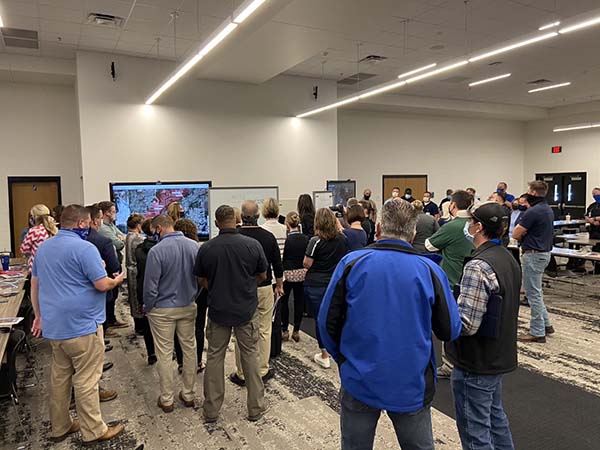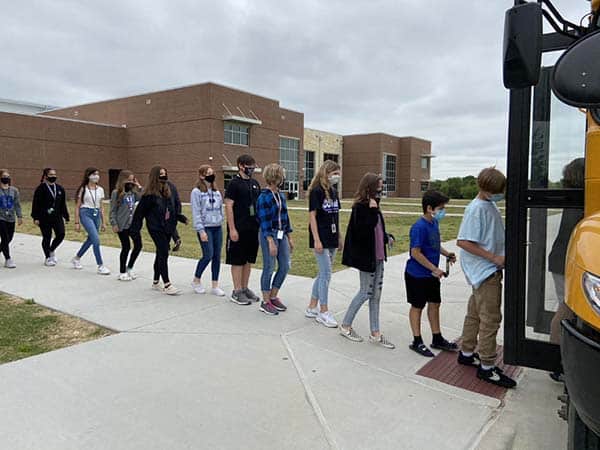A critical aspect of K-12 emergency response is the accountable reunification of students with their parents or guardians. A successful, streamlined reunification requires schools to implement tangible plans for each type of reunification, including on-site, off-site, and partial. Below is an overview of each type and key things you must consider for your school reunification plan.
Overview of Reunification Types
A school evacuation, especially one due to an extreme crisis, can cause physical reactions and strong emotions like terror, fear, and helplessness. Alongside how to respond to an incident, you also need a robust plan for every type of reunification.
On-Site Reunification
For incidents like an incoming storm or a power failure, schools can consider an on-site reunification. Key components include notifying guardians, confirming transportation needs, and reunifying students with their guardians at the school site.
Off-Site Reunification
An off-site reunification may be necessary for events like a fire, bomb threat, gas leak, or a violent crisis at the school. This type includes notification, evacuation, transportation, and reunification at your selected reunification site. If the evacuation is due to a violent event, there are additional things to consider, including how you will:
- maintain a calm, safe environment
- manage the influx of media both at the impacted site and your reunification site
- support student and staff mental and physical health in response to the crisis
Partial Reunification
A partial reunification occurs when there is a need to reunify only a partial number of students. For example, if there is an active robbery near your school, you will not want students who typically walk home to walk through or near the crime scene. Like an on-site reunification, a partial reunification includes notifying guardians, confirming any transportation needs, and reunifying the appropriate students with their guardians at the school site. While the school will be conducting business as usual, you may have an increase in police presence around the school as the criminal activity is taking place.
Developing a Holistic Reunification Plan
Having a reunification plan and practicing the plan for each type of reunification is necessary to keep your school community safe in any situation. A solid reunification plan includes:
- recovery teams and their responsibilities
- reunification site locations and staging
- plans for students with special needs or disabilities
- transportation to the site for students, staff, and emergency supplies
- roles for law enforcement and mental health professionals
- protocols for confirming students are reunified with approved guardians
Schools must also build relationships with first responder agencies and other key participants. Its best practice to engage these agencies during your planning process and in drills or exercises.

Raptor staff visited Midlothian ISD (TX) for a reunification drill. Raptor, district staff, and city staff discussed plans and what resources are available to improve emergency response.
Priorities and Objectives
Your reunification plan should be built around these priorities and objectives:
| PRIORITIES | OBJECTIVES |
|---|---|
| Student and staff safety and wellbeing | Accounting for every student |
| Student and staff location and condition | Accounting for every staff member |
| Identifying missing students and staff | Reunifying every student that can be reunified |
Knowing student status including if the student is accounted for, missing, or injured is critical, but this information can easily be lost in the chaos of a reunification that relies on pen-and-paper methods. Best practice is to give teachers, staff, first responders, and incident commanders instant access to real-time student data, status, and location. When a guardian checks into the reunification site, the greeter can quickly confirm that the student is safely at the site, and therefore, know to continue the reunification process. If a student is marked missing, on the other hand, the greeter will immediately know to escort the guardian to a private waiting area for further information.
It’s also imperative that personnel can accurately confirm the guardians ID, check for sex offender status and custodial restrictions, and capture their signature at reunification. This eliminates inaccuracy, reduces liability, and ensures students are only reunified with approved guardians.
“Our parents were very impressed [with our reunification]. They saw our team checking IDs and using their mobile phones to direct the reunification. They knew that no mistakes were being made. We’ve heard nothing but positive remarks.”
– Bruno Dias, Former Director of Safety, Weatherford Independent School System (TX)
Practice Makes Perfect
Just like any aspect of emergency management, you should rehearse reunification multiple times so faculty understand the established protocols and their specific responsibilities. Every drill or exercise should strictly follow your reunification plan. This allows your school community to gain more familiarity with the plan and become more confident with each practice. It also creates muscle memory that increases response efficiency.
Drills also test your policies and procedures and reveal areas of weakness in your response. Your team and the appropriate students, staff, and first responders should debrief after each drill or exercise to discuss what went well and what needs correction or improvement.

At Midlothian, students followed evacuation protocols and loaded the school buses during an emergency tornado drill.
Streamline Reunification with Technology
The “I Love U Guys” Foundation provides the Standard Reunification Method (SRM), a free resource that gives school and district safety teams proven methods for planning, practicing, and achieving a successful reunification during what are often chaotic, anxiety-filled scenes.
Raptor Emergency Management is 100% aligned with the SRM. Raptor helps streamline reunification and is proven up to 4x faster than paper-and-pencil based methods. With Raptor, you can ensure your school:
- follows each step of the process
- accounts for every student and staff member, including tracking their location and status in real-time
- reunifies students with only safe, approved guardians
- has accurate, robust reporting during and after the event
“Knowing we have Raptor in place and can account for every student on campus and efficiently reunify them with their parents makes our schools safer.”
– Lisa Moya, Assistant Superintendent, Bay City Independent School District (TX)
To learn more best practices directly from John-Michael Keys, Executive Director of The “I Love U Guys” Foundation, and to hear how one district uses Raptor to streamline reunification, watch our on-demand webinar, Key Considerations for an Effective Reunification After a School Crisis.





